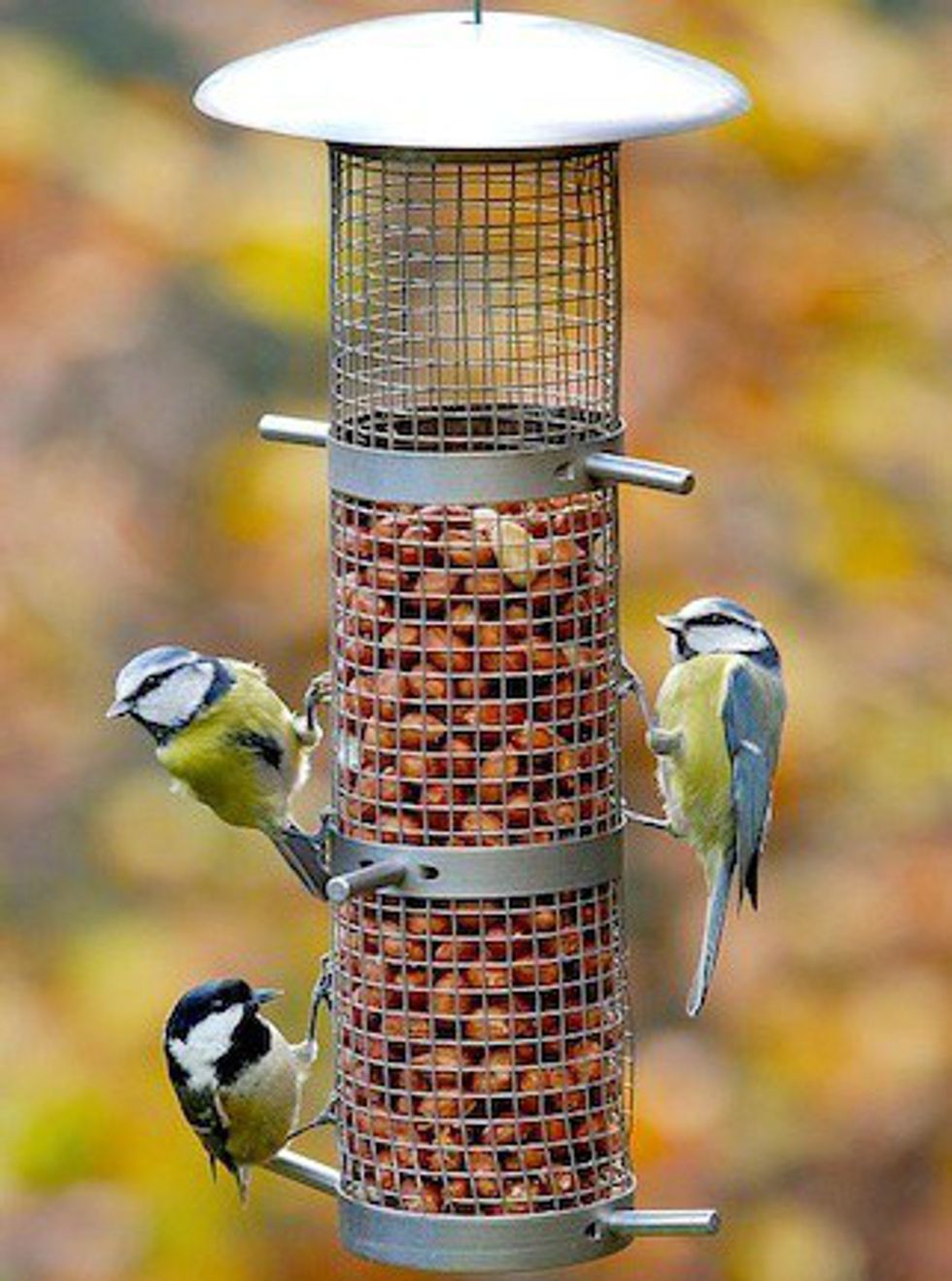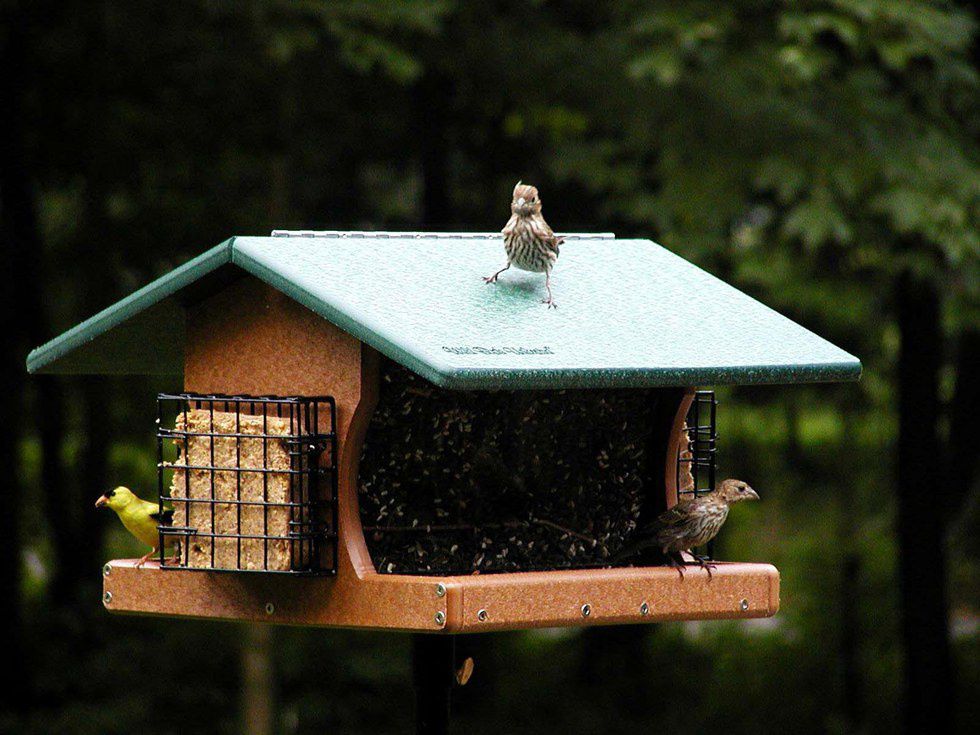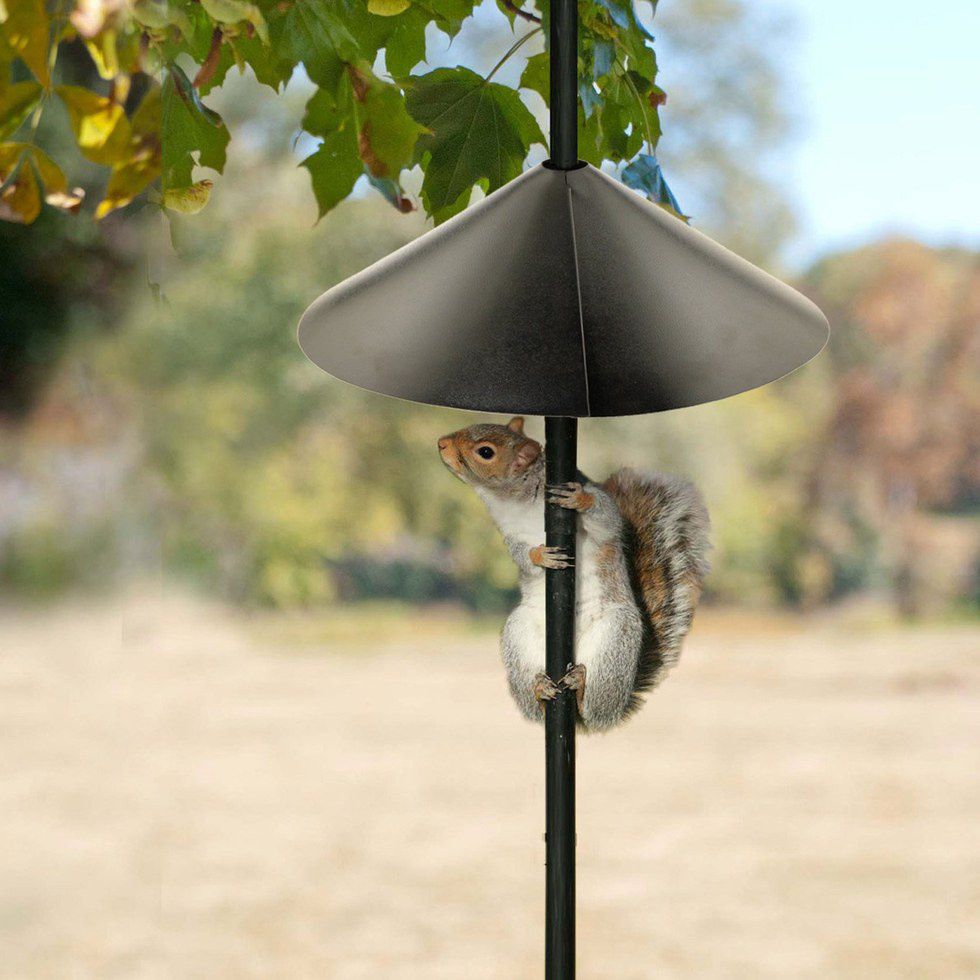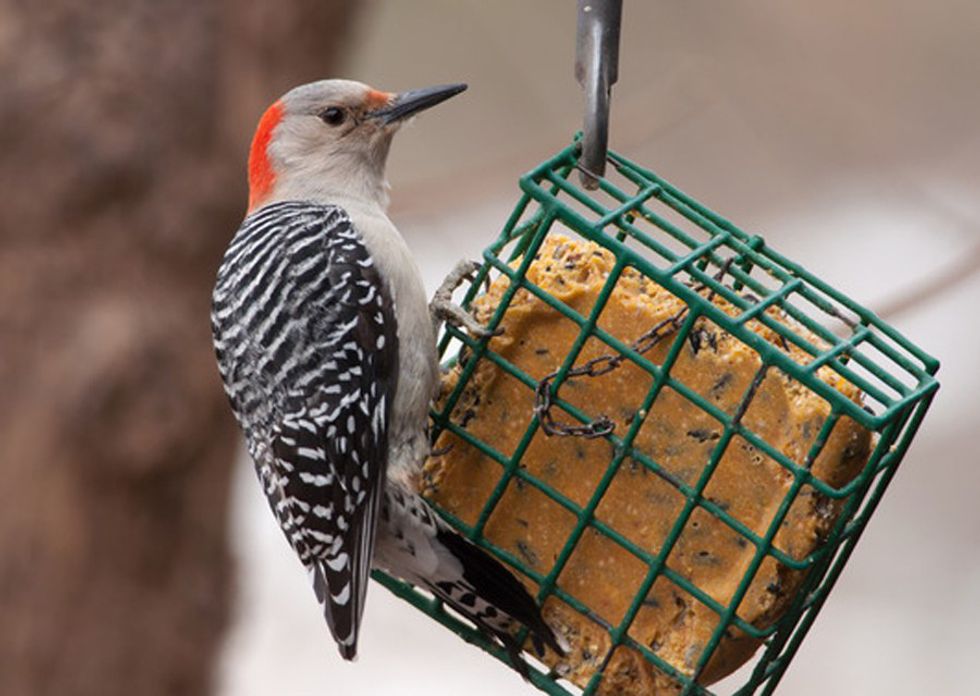Winter’s coming, and that means millions of birdwatchers will once again take up the heroic duty of providing for their famished feathered friends. But as surely as Christmas follows Thanksgiving, hordes of thieving squirrels will do their best to, well, squirrel away the precious birdseed; you'll be overrun with sparrows but won't see even the wingtip of a blue jay; and the elements will give your feeders a beating. What’s a bird nerd to do?
1. Determine what type of birds live in your area, and what kind you want to attract. (If you genuinely don’t care, any type of feeder will do, but keep reading for a quick overview of your options.)
Finding out your location's wildlife is usually as simple as checking a birdwatcher's guide or looking online (or, if you want, charging outside to find out for yourself!).
In general, small perches on a hanging tube feeder will allow smaller birds like finches, sparrows, and chickadees to chow down, but will deny access to larger birds such as cardinals and jays. A classic house or tray feeder will attract the largest variety of birds, but these options are also the easiest for squirrels to get at and tend to be higher maintenance (harder to clean).
2. Determine your spending range, and what you want in a feeder.
Do you want a decorative feeder? A hanging one? A hopper type one? (Beware: Feeders that seem to be designed mainly for looks are probably not going to be the sturdiest--or the most squirrel-proof.) Feeders can go from as cheap as around $10-20 (for basic models at home improvement stores and retail stores) to more than $60-70 for top-of-the-line brands like Droll Yankees. In general, though, $30-40 can get you a perfectly respectable feeder, and it's up to you to decide whether a higher price is worth it, or whether you'd rather stay as cheap as possible. Look at product customer reviews online where you can, and price shop if you've got the time; no sense in overpaying, right?
3. Look for pest-proof features.
Many feeders incorporate features designed to foil squirrels from pillaging the spoils. Some have weight sensitive doors that shut if a large animal like a squirrel (or even a large bird) tries to perch on the feeder. To stymie squirrels, purchase a feeder with a squirrel baffle, or look online for how to create your own.
4. Don't forget the food!
Your choice of feed is just as important as the feeder, and not all feeders are designed to hold all kinds of seed. Nyjer is a type of tiny black seed that is highly appealing to finches, but not so much to other bird species or squirrels. Almost all birds are attracted to offerings of sunflower seeds (or a seed mix that includes sunflower seeds)...but they're also squirrels' favorite food. However, you can try to foil unwanted thefts by using safflower seed, which reportedly is less appealing to squirrels (cardinals and purple finches absolutely LOVE it, though). Finally, in cold weather, try hanging a block of suet in a special feeder to tempt jays, woodpeckers, chickadees, and nuthatches.

























